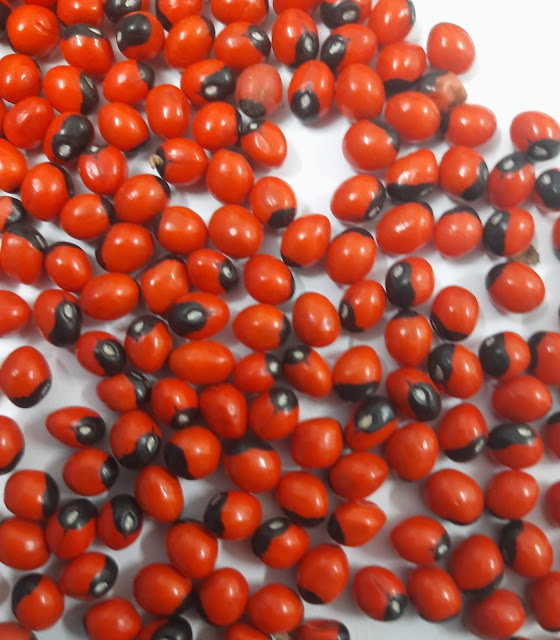Few clinical problems encountered last week
One problem case discussed by my old student
Six month old baby born out of non consanguineous marriage. Antenatal natal and post natal period uneventful and her growth and development was normal till 13 days back.Whole event started with running nose low grade fever, which was managed symptomatically.As the cough and dyspnea worsened he was put on antibiotics orally ,later became worse and was referred to him. Patient was admitted in PICU, ventilated.Clinical ,radilogical features suggestive of bronchopneumonia.Blood culture came negative.
Baby responded well. Cirulatory status normal, chest clear. Heart sounds normal,no cardiomegaly,
He was stable on minimal settings on room air but could nt be weaned from ventilator
There was family history of two siblings died at eight month in similar manner. One boy and one girl.
His sensorium normal,eye movement normal pupils normal and facial movement normal.
Tone of limbs was on lower side and deep tendon reflexes not elicit able.
So what were the possibilities?
He was sure the difficult to wean of situation is unlikely to be due to respiratory or cardiac cause.Ventilator dependence just for mechanical support. So we must be dealing with a power inadequacy to support respiration? But why ? Baby was alright till this episode of respiratory infection.
One more supporting evidence for the power problem was the hypo-tonia and hypo-reflexia.
Here comes one important question
In such a scenario many factors non neurological are likely to modify the tone and reflex. How can we postulate a neurological problem responsible for this?
Yes, agreed
We thought of possibilities like electrolyte imbalances, drug or toxins or neutritional problems which can modify lead to a state like this.These are more common and treatable entities.
Investigation in this line showed normal serum electrolytes. glucose calcium magnesium.ECG showed normal rate , rhythm ,voltage no ST T wave changes. No evidence of any electrolyte abnormalities.
Is there a possibility of an inborn error of metabolism?
They may be triggered by infection
Most of them present with central symptoms, like alteration of sensorium,vomiting,seizures associated with tone and reflex abnormalities. Here fully conscious child, central component all normal
Is there a possibility of channalopathies?
Good thought .
But at this age most of them wont present. Another thing they wont last this duration,
But at this age most of them wont present. Another thing they wont last this duration,
(We had renal tubular acidosis presenting like this with extreme hypokalemia responsible for weakness and hypotonia and ventilatory failure)
Did you do a muscle enzyme study. What is the CPK level?
Done,
was normal
was normal
Muscle and myo- neural junction problems run in families of coure. But one point strongly argue against this possibility.
Most of the myopathies present in the early weeks.
Neonatal muscular dystrophy which can have an early onset also likely to have onset earlier than this
So perfectly normal baby till seven months of age all on a sudden going to floppy weak situation is unlikely.
One entity which can present like this is botulism. But invariably the occular muscle will be involved. Here it is spared.
So most likely it must be a neuropathy.
Where in the LMN, Anterior horn cell or radicle or peripheral nerve ?
Strong family history,and possibility of a later onset after a normal early period SMA is more likely.Nothing arguing against that. A patient on ventilator we are not in a position to note the sparing of diaphragm fasciculations on tongue etc which may support the concept.
What about radicle or peripheral nerve ?
Is there a possibility of demyelination which is immune mediated OR a hereditary problem of myelin or peripheral nerve which has a hereditary reason.
Here comes question?
How common is Guillain barry in this age group.
If that possibility is considered it is good that we it is eminently treatable with IV gamma.
Occasionally we had experience of hypo myelinating neuropathy etc but will it occur all on a sudden. I dont have experience on these rare disorders
So what is most likely possibility clinically?
With strong family history of two more sibling dying at the same time with same clinical features, and the clinical features all fitting most likely we consider possibility of SMA.
We have arranged for a genetic confirmation
By the time nerve conduction study was done.
Finding was interesting. Features were suggestive of demyelination
In SMA is it is very uncommon.
So what did we decide?
Even though GBS situation is rare in this age group,it is treatable ,we cant ignore the result of NCV.
We decided to give put him on IV gamma
Also,decided to put on carnitine,Vitamin B1,B6,B12.
All metabolic parameters meticulously monitered and corrected
Patient under follow up
This case was discussed yesterday
Today ,not much of improvement. Status co.
****************************************************
A Case in our PICU
Till late eighties we were puncturing the bladder blindly before the ultra sonogram was not available in govt set up.
Now we routinely do USG guided puncturing.
Here also we punctured the bladder USG guided and removed it easily.
Clamping at the valve may lead to damage to the valve.
2.Inserting guide-wire is mentioned , but may lead to false tracking or injury.
3.Instillation of mineral oil, earlier other chemicals like ether also were used.
4.Puncturing the bladder with a lumbar puncture needle under USG guidance trans - abdominal above the pubic symphysis pubis. In females access is easier trans vaginally. Trans rectal method may be tried in men.
If we are doing the puncture blindly better to instill little more water in to the bladder which will make it easy to puncture.
Pull the catheter down so that the bulb goes to the neck of bladder tightly and we can guide the needle above the pubic symphysis down to the bladder neck.
We found it difficult to get it out
All our team members were doing it regularly bu never encountered such difficulty.
We got help of Dr Ajayan from ENT somehow we could get it out
This was the appearance of the Ryles tube
Knot formation on Ryles tube can occur, but not that common
Lucky that it came out without much difficulty OR trauma.
This is common especially when we use small bore tubes, longer duration and when length of tube inside is too long.
This is reported in short duration Ryles tube insertion also.
One message from this is if you find difficulty in removing try to arrange for a USG before pulling further and traumatizing.
Similarly when we introduce catheters inside bladder better not to introduce too long as it may lead to knot formation inside bladder.
(I dedicate both these cases to my Team in PICU , Dr.Nisha,Dr.Said bakri,Dr.Sameeha , Dr.Renu and Dr.Ajayan. Professor of ENT)
****************************************************
A Case in our PICU
Retained foleys catheter
Once in a while we face difficulty in taking out foleys catheter.Last week we encountered difficulty in a five year old boy in Pediatric ICU. I had a vague memory of introducing soda bicarb through the side port. Long back when I was a house surgeon I did it in surgery.But i could nt see any referance about it recently .So dont try that .Till late eighties we were puncturing the bladder blindly before the ultra sonogram was not available in govt set up.
Now we routinely do USG guided puncturing.
Here also we punctured the bladder USG guided and removed it easily.
Few points to share in this context.
This happens more commonly when we instill normal saline instead of sterile water for inflating bladder of foleys catheter. Salt may get crystallized and block the narrow lumen.Clamping at the valve may lead to damage to the valve.
Few other techniques we could try in such situations.
1.Cut the side port proximal to the bladder just proximal to the valve and wait for the water to drain.2.Inserting guide-wire is mentioned , but may lead to false tracking or injury.
3.Instillation of mineral oil, earlier other chemicals like ether also were used.
4.Puncturing the bladder with a lumbar puncture needle under USG guidance trans - abdominal above the pubic symphysis pubis. In females access is easier trans vaginally. Trans rectal method may be tried in men.
If we are doing the puncture blindly better to instill little more water in to the bladder which will make it easy to puncture.
Pull the catheter down so that the bulb goes to the neck of bladder tightly and we can guide the needle above the pubic symphysis down to the bladder neck.
Another case ,A Case of difficult Ryles tube
Our team members of ICU were trying to change ryles tube from kid six years on long duration ventilation and ryles tube feeding. All of them were doing it regularlyWe found it difficult to get it out
All our team members were doing it regularly bu never encountered such difficulty.
We got help of Dr Ajayan from ENT somehow we could get it out
This was the appearance of the Ryles tube
Knot formation on Ryles tube can occur, but not that common
Lucky that it came out without much difficulty OR trauma.
This is common especially when we use small bore tubes, longer duration and when length of tube inside is too long.
This is reported in short duration Ryles tube insertion also.
One message from this is if you find difficulty in removing try to arrange for a USG before pulling further and traumatizing.
Similarly when we introduce catheters inside bladder better not to introduce too long as it may lead to knot formation inside bladder.
(I dedicate both these cases to my Team in PICU , Dr.Nisha,Dr.Said bakri,Dr.Sameeha , Dr.Renu and Dr.Ajayan. Professor of ENT)





Good cases Thank you for sharing
ReplyDeleteTPJ